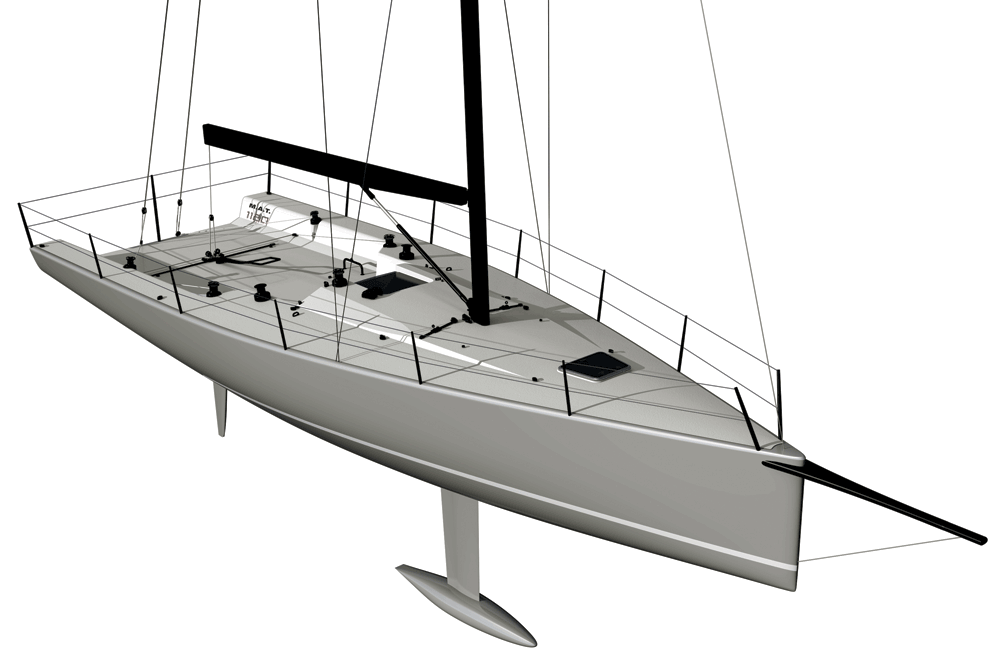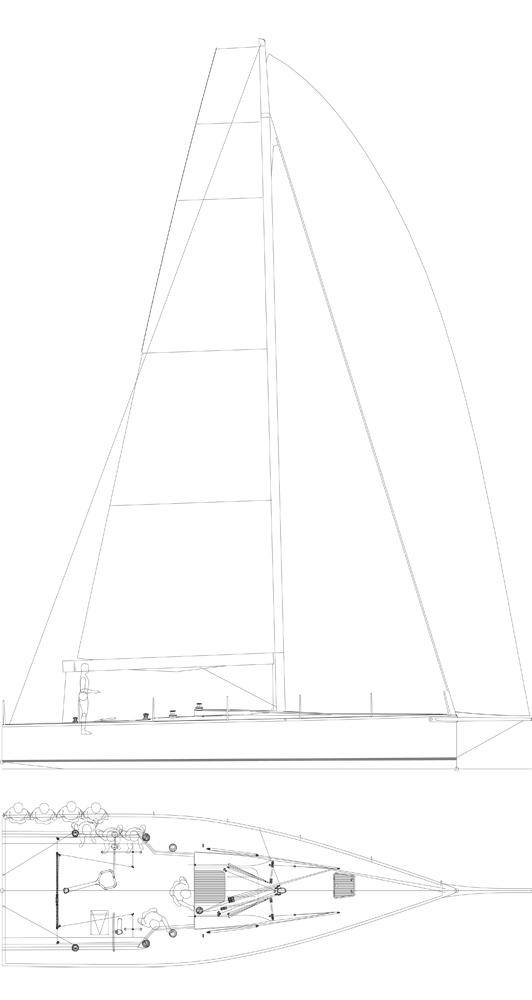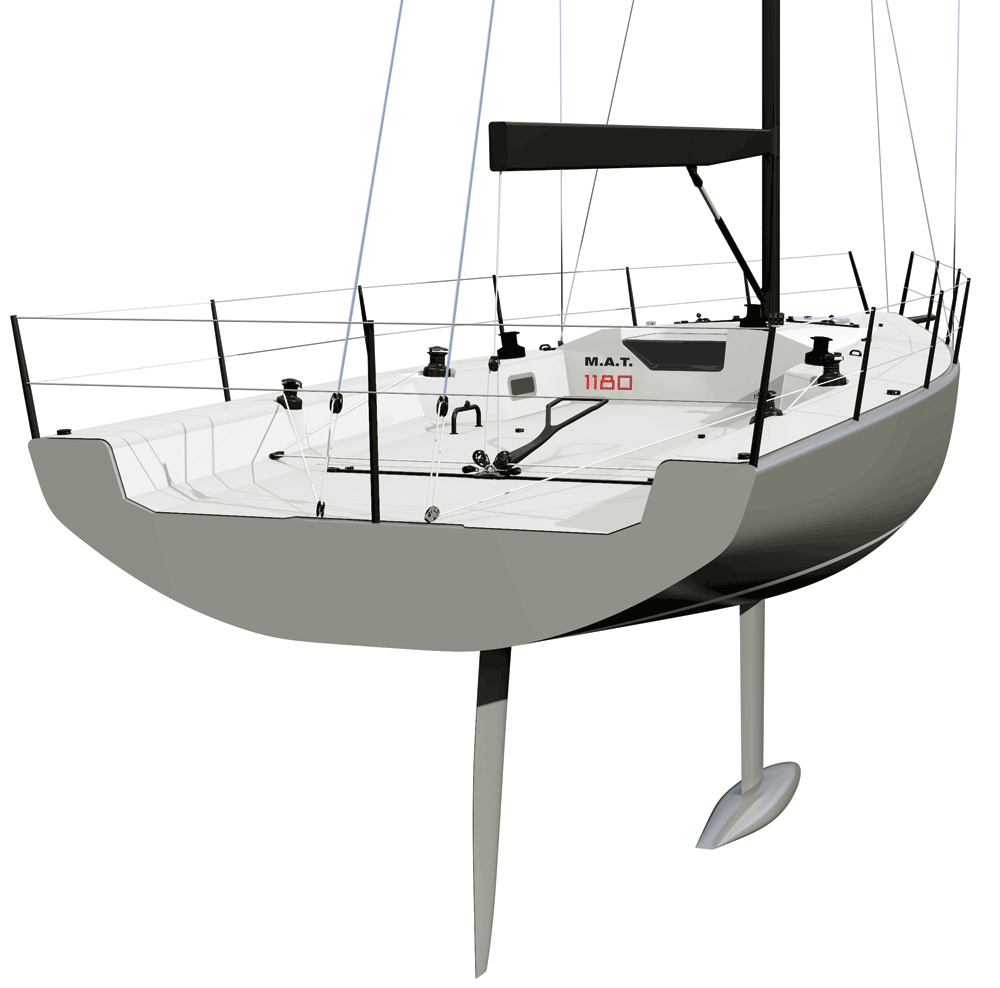Mills M.A.T. 1180
Domination of the IRC fleet is the goal for this no-compromise racer
One of the fun things about reviewing a Mark Mills design is that I get to Skype Mark and chat with him for an hour. Mark was not shy about explaining the details of his latest work to me. In this case, it's his exciting new 38-foot 9-inch IRC racer

now being built in Turkey at the Gurit yard.
The IRC has been through some changes over the last 15 years. The dual-purpose boats that were dominant in the early days of the IRC are slowly giving way to all out race boats much in the style of the TP 52 box-rule class. These new IRC boats, exemplified by Mark's 1180, are all about sailing length and power. If you are approaching the start line in your dual-purpose boat and you look over your shoulder and see an 1180 on your weather hip you should be very afraid.

The hull form is complex. It is derived from the shapes of the successful TP 52 designs that have done well under the IRC. It's almost like two boats. There is the light air shape with low prismatic and low wetted surface, and there is a shape with lots of volume pushed outboard aft to increase the prismatic when the boat is heeled. In light to moderate air it will be critical to sail the boat upright. In more breeze a heel angle around 18 degrees will put the boat over the stability curve "hump" and the power gained will offset the additional drag of immersing those aft sections.
There is no chine. There is almost a chine but it is radiused off to help with that transitional zone where the light air boat becomes the heavier air boat. Crew weight will either be all forward for light air to keep the fanny out of the water or all aft to push the stern sections in and provide additional stability. Max beam goes all the way to the stern.
I talked to Mark about the sharp corner at the forefoot. He believes this adds to the sailing length. The sheer is dead straight. I asked Mark why and he said because it looks good on this type of boat. I would agree. This boat has a hungry look to it, very aggressive. The D/L of this design is 115. The L/B is 2.97. Draft is 8 feet 2 inches with a beaver-tailed bulb on a cast steel post with composite fairing.

The sailplan and deck plan show athwartships jib tracks that allow for a 7.5 degree sheeting angle, and that's to the middle of the track. The only running gear outboard of the low cabintrunk are the lines to control the jib leads. This leaves a very clean sidedeck. The tiller steering is forward of the main traveler. Running backstays lead to winches just aft of the helmsman's position. Twin wheels are an option.
The rig, as you can imagine, is big with a SA/D of 28.85. The spar is a double-spreader carbon spar from Aaxon with an integral hydraulic mast jack. The square-top mainsail means that running backs will be required. I'd love to sail this boat in light air.
Construction is a combination of E-glass, carbon fiber, PVC foam and both epoxy and Vinylester resins. The hull and deck will be resin infused to insure light weight.
Clearly this is not a dual-purpose boat and that's why I did not talk about the interior. This boat is only designed to win races. I suspect it will be very successful in that endeavor.
LOA 38'9"; LWL 33'5"; Beam 13'1"; Draft 8'2"; Displ. 9,625 lbs.; Ballast 4,461 lbs.; Sail area 816 sq. ft.; SA/D 28.85; D/L 115; L/B 2.97; Auxiliary Yanmar 30-hp saildrive; Fuel 21 gal.; Water 26 gal.
Mills Design Ltd. Glendale, Kilbride Co. Wicklow, Ireland +353 404 48500 www.mills-design.com
Our best estimate of the sailaway price $235,000

Comments